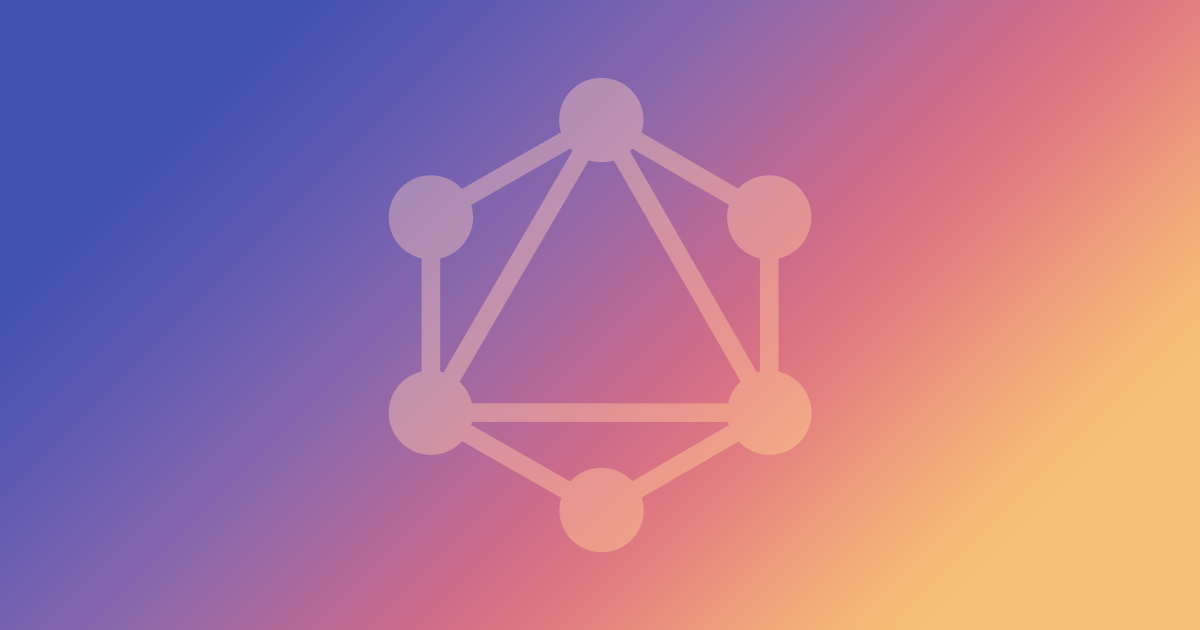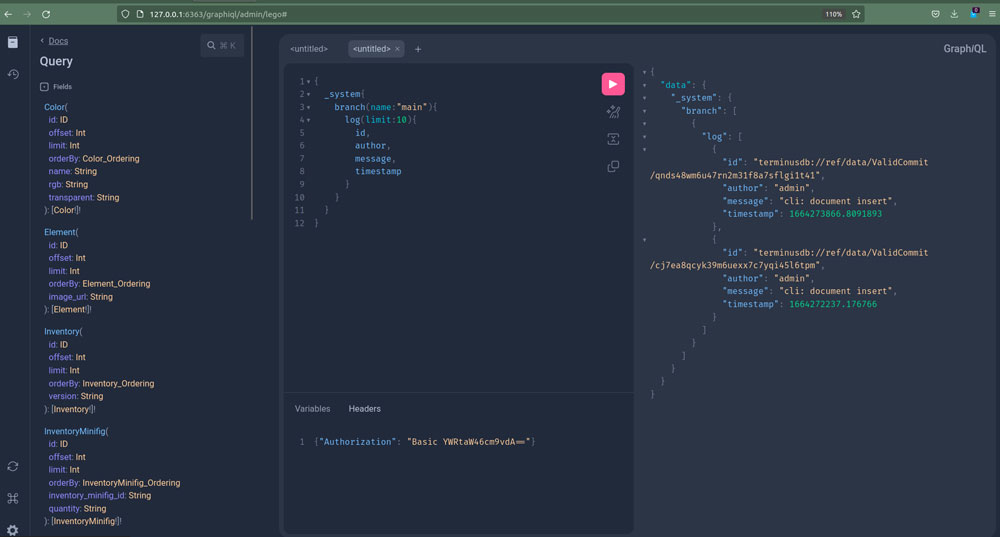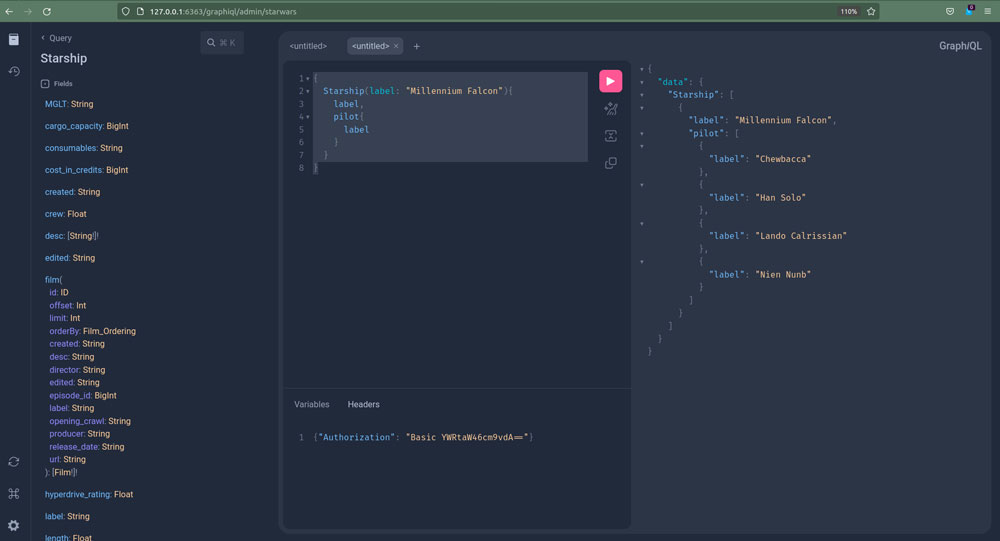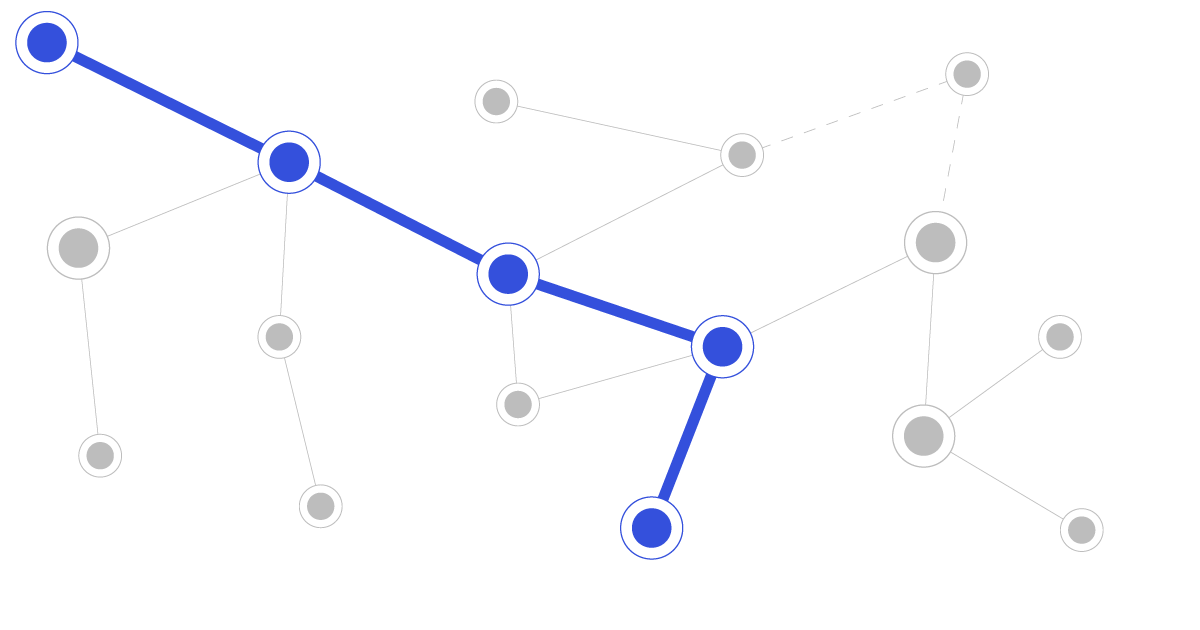How to implement GraphQL in fourteen days
- Gavin

My vision of TerminusDB has, since inception, been that it should be a flexible content platform. That’s why we’ve tried to develop not only schema modelling capabilities but also git-for-data features, diff calculators, and automatically generated user interfaces.
Given our focus on content management and delivery, it might seem strange then that it took us so long to start trying to position TerminusDB as an ideal platform for headless CMSs. It took our community prodding us into it, but we’re taking the plunge.
To be a content platform it helps if you can plug in to existing data ecosystems. And this has been a point of friction for TerminusDB.
And that’s why we decided to go ahead and implement GraphQL for TerminusDB. We (mostly Matthijs van Otterdijk with some help from myself) implemented automatic schema construction from TerminusDB schemata and the associated query engine in a little over a week.
I’m extremely excited about this development, since it means that now TerminusDB will be available to many more languages (anything with a GraphQL client), there will be a high quality open-source method of developing with GraphQL, and a straightforward method of exposing RDF as a GraphQL endpoint.
It feels like a lot of unnecessary frictions simply fall away, and TerminusDB seems to fit so naturally into the GraphQL environment that I’m confident it will quickly be one of the best platforms around for serving content via GraphQL.
Juniper
We didn’t do it from scratch of course, we leveraged the already existing, and very well designed (if not so brilliantly documented) Juniper.
Juniper is really great and we recommend it, but be wary of the Juniper book. It is pretty badly out of date. You’re better off reading the code examples and automatically generated rust docs.
This toolkit lets you develop GraphQL endpoints directly from your rust data structures when you have a static schema, or to generate a dynamic schema yourself.
We used both approaches to expose different parts of TerminusDB.
Static - Exposing TerminusDB's Innards
The internal aspects of TerminusDB, the system database (_system), the repository graph (_meta) and the commit graph (_commits) are all available to explore using the GraphQL endpoint. This makes various administrative tasks simpler, and the powerful introspection tools that GraphQL provides, makes exploring this fairly straightforward.
You can point any GraphQL client at a valid TerminusDB data product and you’ll get access, not only to the data product, but the meta data as well. For instance, you can look at the log of updates to the database, or explore which branches exist.

Dynamic - Modelling TerminusDB Documents in GraphQL
TerminusDB is build around the concept of a document. In order to expose this to GraphQL, we automatically create a number of Object type definitions and input Object type definitions which enable the GraphQL user to explore content in TerminusDB and filter and order it without any additional work.
The basic idea is that each TerminusDB document type yields an object type, which has all the fields of the document type as retrieval operations. If a field points at another document type, this operation allows the retrieval of additional linked documents, optionally filtering and ordering on any of its properties. Each document type also yields an operation in the top-level query object that similarly allows filtering and ordering.
Using a Star Wars Schema schema, with a Star Wars Turtle file loaded into the database, we can perform a query which searches all star ships, for the one called “Millennium Falcon”, and then obtain the name of its pilot.
{
Starship(label: "Millennium Falcon"){
label,
pilot{
label
}
}
}
To which we will get an answer such as the following:

Juniper made adding these queries automatically from the schema dynamically fairly straightfoward. We simply traverse TerminusDB’s schema and create acceptable Juniper GraphQL objects as a result.
In order to perform searches, We also use Juniper’s resolution with little modification. We implemented parameters for these queries by directly connecting to TerminusDB’s storage backend and created appropriate iterators in rust. The whole thing is pretty responsive and surprisingly robust for a couple of weeks of work!
The Future
We will be extending the GraphQL interface with additional features as we go forward. We see this as the primary method of interaction for many front-end applications which use TerminusDB so we want to make it completely painless.
First we will extend the parameters for queries with a more elaborate filtering system. We want to be able to filter your documents on the properties of the documents which are linked to it as easily as the top-level document.
Adding an intermediate pagination and cursor object type is also on our list. This will let us return cursors as well as metadata about queries, such as the number of total results.
We also want to implement back links which will show you all things that link to a given object, and not just what an object links to.
We would also like to introduce path queries directly to GraphQL. This would let you specify a path expression which links you from the current object, to any other object of interest. This will let you do shortest path type operations, or ordered path operations. This would really make GraphQL much more graphy.
Finally, we would like to be able to specify TerminusDB schemata in GraphQL’s schema language. Since GraphQL’s class system is strictly simpler, we can embed a GraphQL schema in TerminusDB without loss of information.
We’re interested in people playing around with this system and we’re very interested in feed back and suggestions.
To the Stars and Beyond!

GraphQL CMS – Why GraphQL is a Must Have
A GraphQL CMS is efficient at fetching and retrieving data & our graph query ability is a must-have for those building content infrastructure

Putting the Graph in GraphQL Query
GraphQL is neither graph nor query language. It is great, but we wanted to use GraphQL as a graph query language so we did something about it.

GraphQL RDF Bridge using Star Wars Dataset in TerminusDB
I wrote this blog to showcase a GraphQL RDF bridge using a Star Wars dataset that I found. It explains what I did in TerminusDB

GraphQL CMS – Why GraphQL is a Must Have
A GraphQL CMS is efficient at fetching and retrieving data & our graph query ability is a must-have for those building content infrastructure

Putting the Graph in GraphQL Query
GraphQL is neither graph nor query language. It is great, but we wanted to use GraphQL as a graph query language so we did something about it.

GraphQL RDF Bridge using Star Wars Dataset in TerminusDB
I wrote this blog to showcase a GraphQL RDF bridge using a Star Wars dataset that I found. It explains what I did in TerminusDB